MASJID

The Wapauwe mosque is located in the Kaitetu village, district of Leihitu, Central Maluku Regency, Maluku Province. This mosque, still used as a place of daily worship, is now located on a compound called Teon Samaila in the middle of an old residential area. It lies less than 300 meters from the shore and Fort Amsterdam.
Inside the mosque, a variety of historical artifacts are preserved, including a pulpit, scales for zakat, an oil lamp, two ancient Qurans, an old door with a carved copper plate and a long wooden drum used for the call to prayer. The mosque remains a revered pilgrimage site, attracting visitors and pilgrims from various regions to this day.
While the mosque undergoes regular renovations by the villagers of Kaitetu, it has maintained a singular antique form. Some of the old mosque’s pillars, beams, and ornamental finials, including the old “tiang alif”, have been replaced and are now on display in the Kaitetu Gallery.
The main characteristics of the Wapauwe mosque are its natural materials and techniques, which have been preserved by its caretakers, the Tukang 12 (see booth 5). The lower wall of the mosque was added at a later stage. It is built in coral stone while the upper panels are made of assembled sago palm midribs, and the roof is made of sago palm leaves.
The core part of the Wapauwe Mosque building measures 10 x 10 m (more precisely, 9,70 m x 9,65 m) while the foyer or veranda, a more recent addition, measures 6,35 x 4,75 meters. The ablution area and toilets were also added recently in the early 2000s. The mosque itself is 9,35 meters tall crowned by a 2,26 meters long finial (tiang aliph) in Bintangur wood (Callophylum inophyllum), a specificity of Maluku architecture, extending its height to 12 meters total. The building rests on a 0,57 m river and coral stone platform covered with gravel. This gravel floor was covered with a thin layer of cement in 1959.
While in most cases in Southeast Asia the upper roof of pyramidal (tumpeng or tajug) mosque types ends in a pointy tip, this mosque has a bell-shaped upper roof which gives it an unusual look. Another distinctive element to this mosque is the addition of overhanging paddle-like finials carved in wood covered with fan-shaped roofing in sago leaves and Arenga Pinata palm tree (ijuk/gamutu) fibres. A total of eight paddles can be found at the angles of the upper and lower roofs (see 2).
Another clear hallmark that sets the Wapauwe mosque apart is the roofing combination of the light brown washed sago leaves and the dark black gamutu covering the hip rafters. And finally, a square cavity in the mosque outer compound ground (northwest), filled with various types of stones, serves as a sacrificial pit during the Eid al-Adha celebrations.
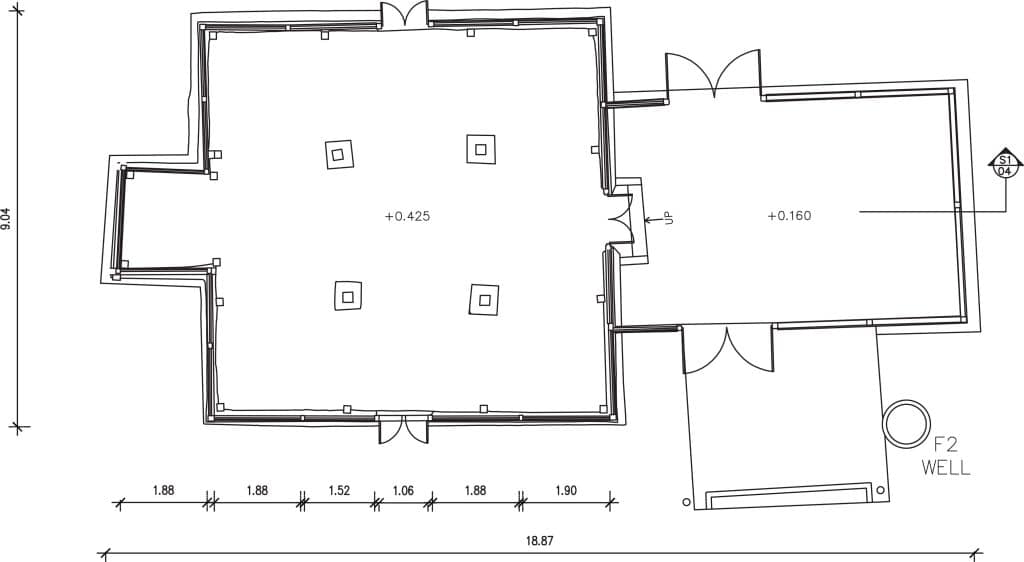
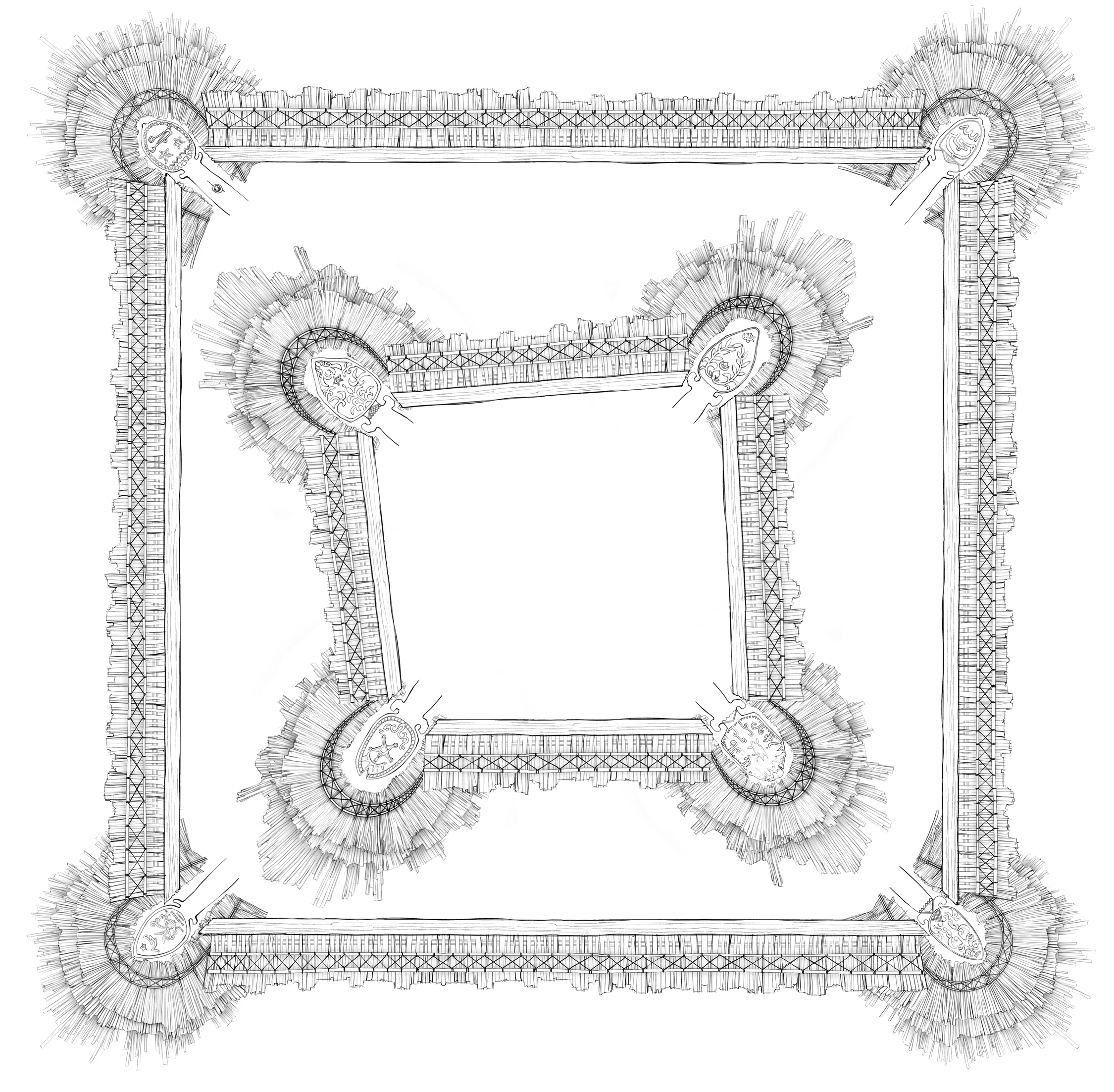
The Wapauwe Mosque is not only a treasure of architectural history, but also the center of a vibrant contemporary Muslim community. The Maritime Asia Heritage Survey (MAHS) has recorded oral histories from Kaitetu’s community leaders discussing aspects of traditional construction techniques and its associated ceremonial knowledge, which can be accessed at:
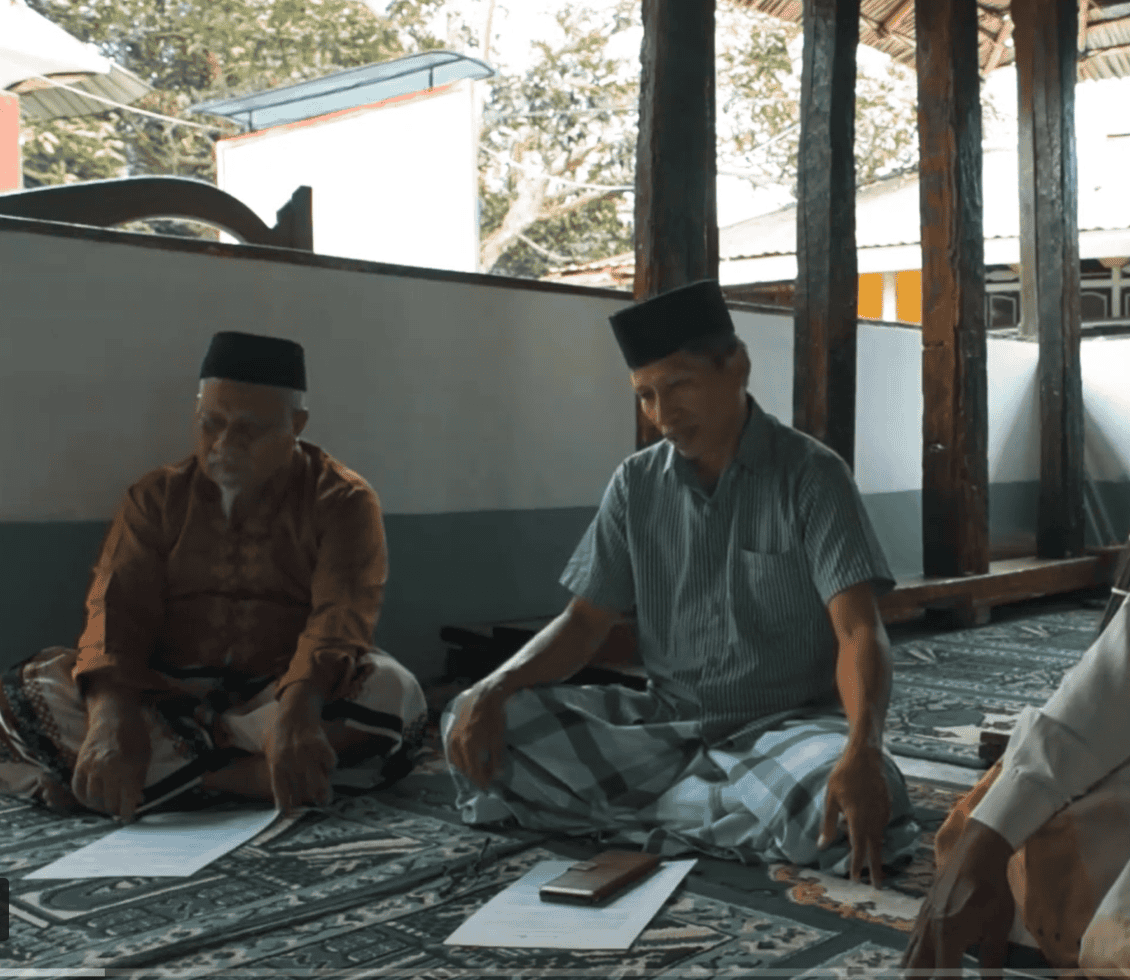
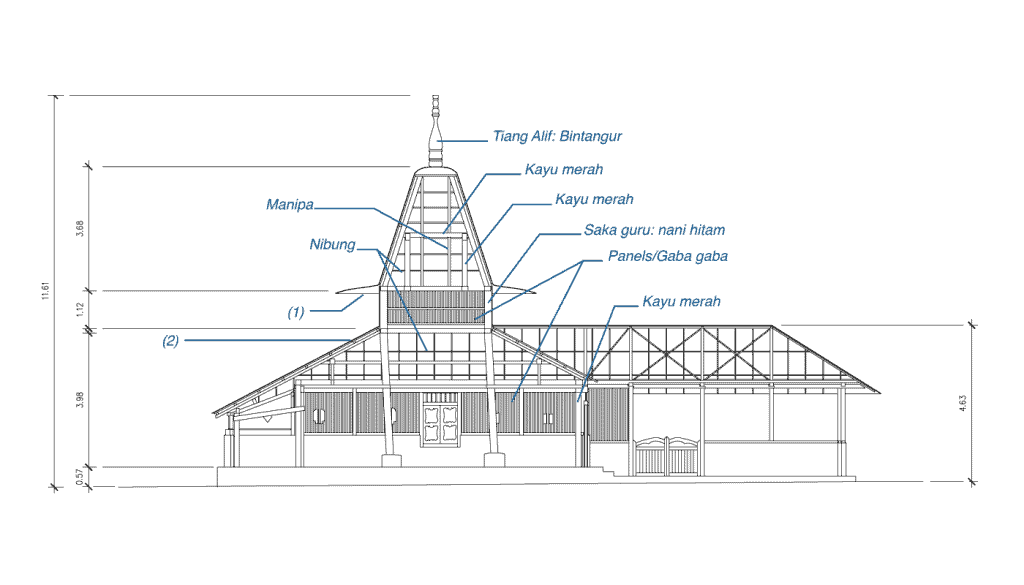
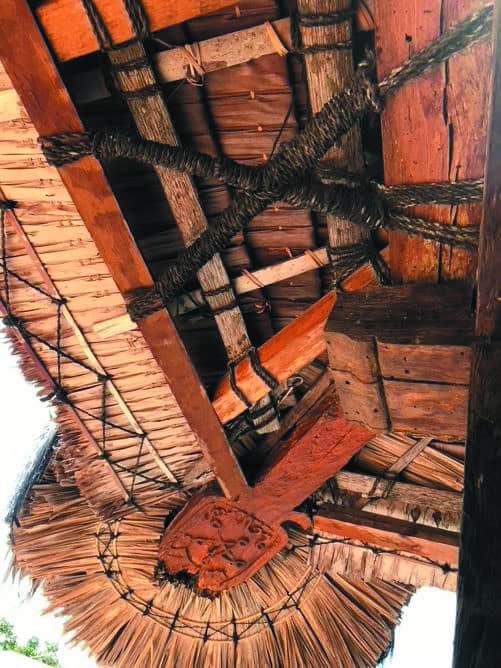
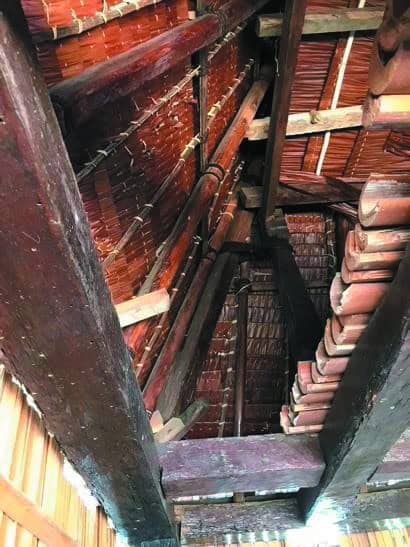
(1) The upper part of the lower roof is tied to the tie beam with arenga palm (betel palm) black fiber cords. (photos: Hélène Njoto)
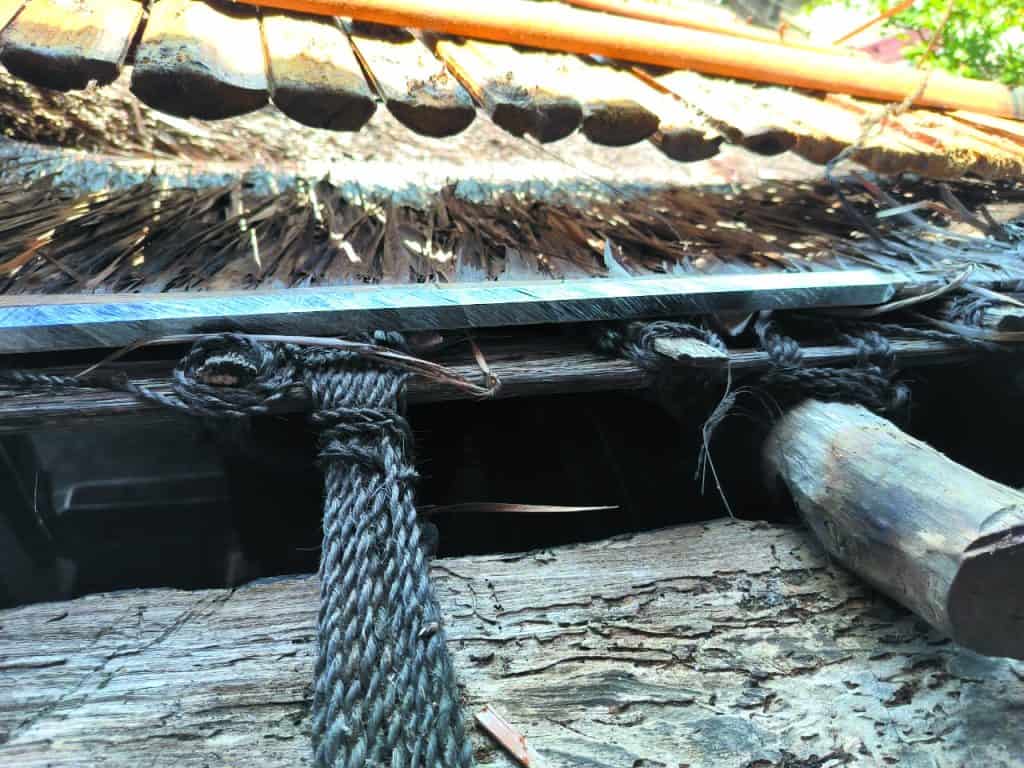
The main characteristics of the Wapauwe mosque are its natural materials and techniques, which have been preserved by its caretakers, the Tukang 12 (see booth 5). The lower wall of the mosque was added at a later stage. It is built in coral stone while the upper panels are made of assembled sago palm midribs, and the roof is made of sago palm leaves.
The core part of the Wapauwe Mosque building measures 10 x 10 m (more precisely, 9,70 m x 9,65 m) while the foyer or veranda, a more recent addition, measures 6,35 x 4,75 meters. The ablution area and toilets were also added recently in the early 2000s. The mosque itself is 9,35 meters tall crowned by a 2,26 meters long finial (tiang aliph) in Bintangur wood (Callophylum inophyllum), a specificity of Maluku architecture, extending its height to 12 meters total. The building rests on a 0,57 m river and coral stone platform covered with gravel. This gravel floor was covered with a thin layer of cement in 1959.
While in most cases in Southeast Asia the upper roof of pyramidal (tumpeng or tajug) mosque types ends in a pointy tip, this mosque has a bell-shaped upper roof which gives it an unusual look. Another distinctive element to this mosque is the addition of overhanging paddle-like finials carved in wood covered with fan-shaped roofing in sago leaves and Arenga Pinata palm tree (ijuk/gamutu) fibres. A total of eight paddles can be found at the angles of the upper and lower roofs (see 2).
Another clear hallmark that sets the Wapauwe mosque apart is the roofing combination of the light brown washed sago leaves and the dark black gamutu covering the hip rafters. And finally, a square cavity in the mosque outer compound ground (northwest), filled with various types of stones, serves as a sacrificial pit during the Eid al-Adha celebrations.
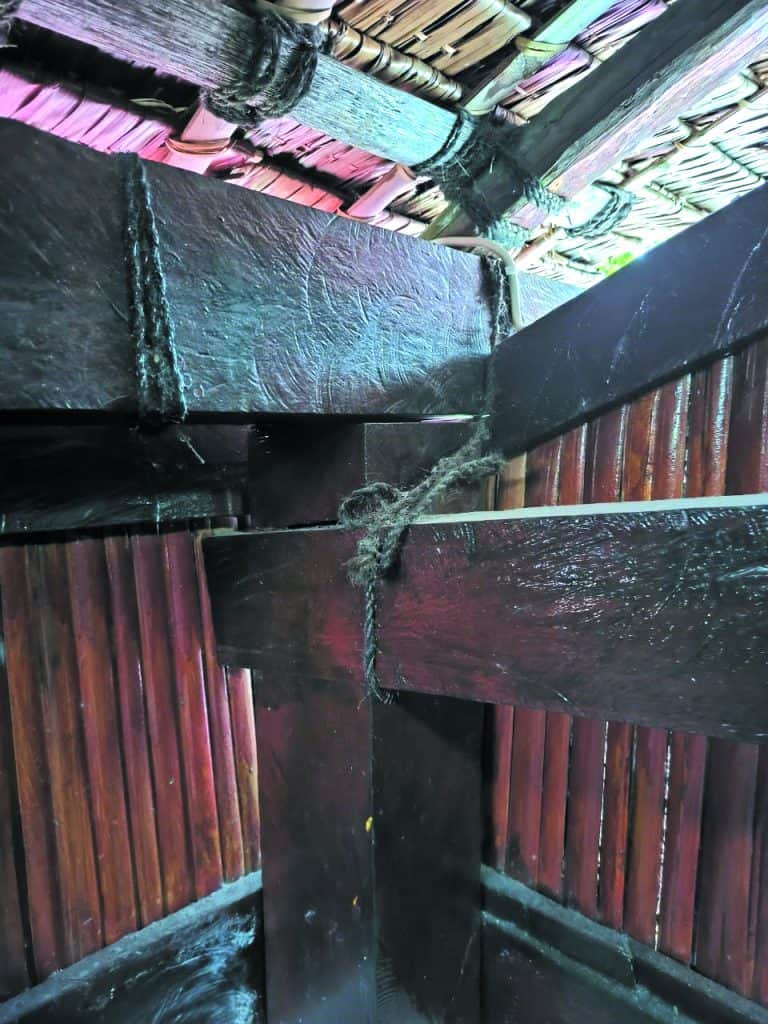
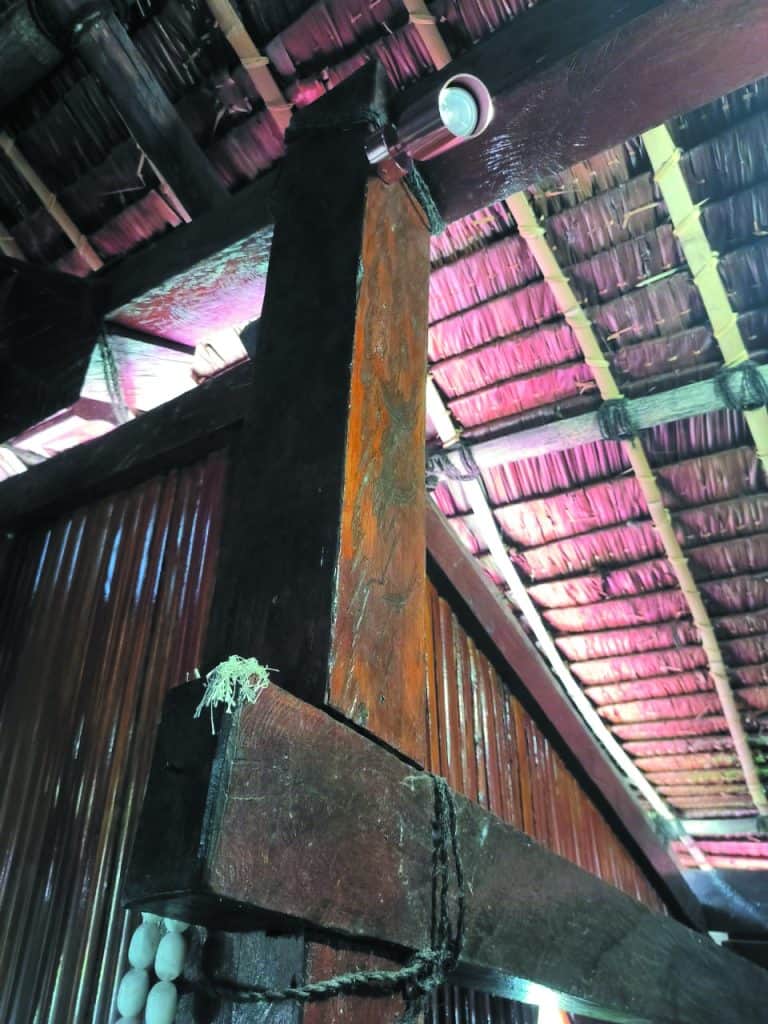
Gamutu cords with more symbolic function.
(photo: Hélène Njoto)

Main post
Saka guru (photo: Hélène Njoto)
The village of Kaitetu on the island of Ambon, Maluku, Indonesia is home to one of Indonesia’s oldest mosques, as well as an old Christian Church, and a Dutch fort that was also the former laboratory of the renowned 17th-century naturalist Georg Eberhard Rumphius. This digital collection includes 3D models of those historical structures and related artifacts produced by the Maritime Asia Heritage Survey (MAHS).
